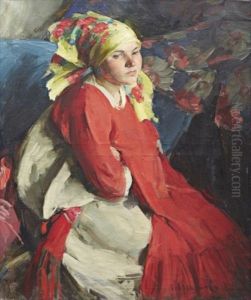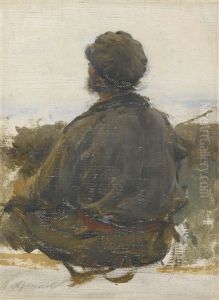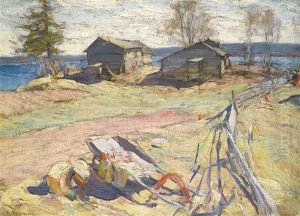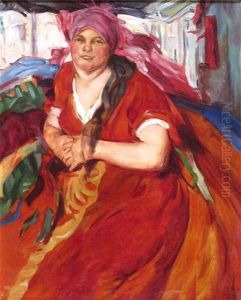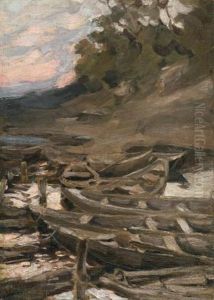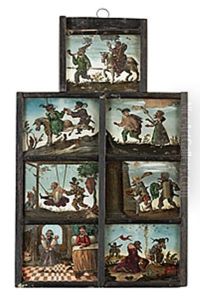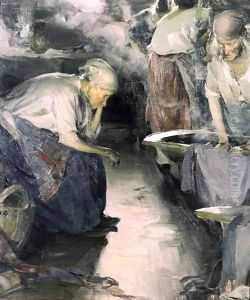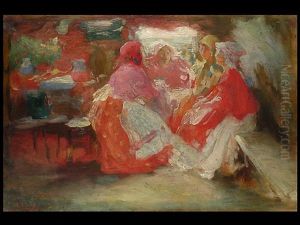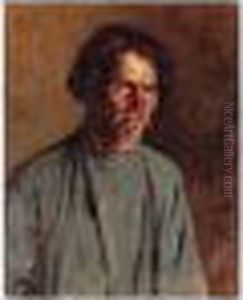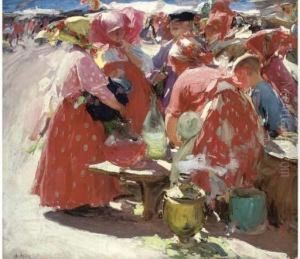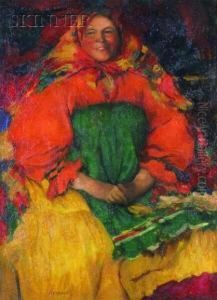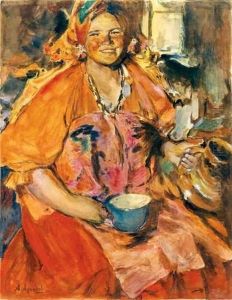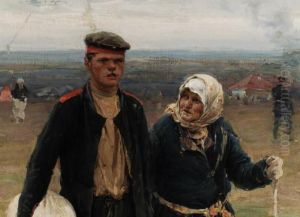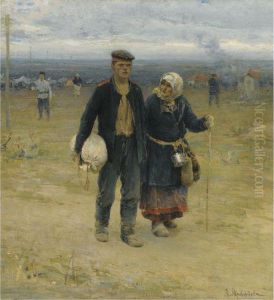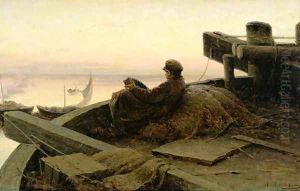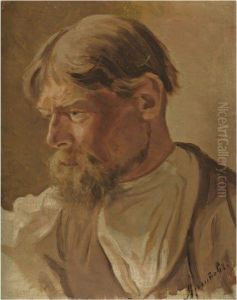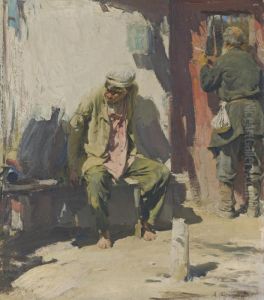Abram Efimovich Arkhipov Paintings
Abram Efimovich Arkhipov was a prominent Russian realist artist, born on August 27, 1862, in the Yaroslavl province of the Russian Empire. He is best known for his compassionate portrayals of the lives of the Russian peasantry and his exploration of social themes through his art. Arkhipov studied at the Moscow School of Painting, Sculpture and Architecture, where he was influenced by his teachers, the famed realist painters Vasily Perov and Alexei Savrasov. He also studied at the St. Petersburg Academy of Arts, further honing his skills.
Arkhipov was a member of the Peredvizhniki (Wanderers), a group of Russian realist artists who formed an artists' cooperative in protest of academic restrictions. The Peredvizhniki sought to engage directly with the public and to address serious social issues through their traveling exhibitions. Arkhipov's work often focused on the lives of working women, and he is particularly noted for his paintings of laundresses and peasant women, which depict their hard labor with empathy and dignity.
In 1911, Arkhipov became a member of the Russian Academy of Arts. Throughout his career, he painted a variety of subjects, ranging from genre scenes to portraits and landscapes. His style was characterized by a robust, painterly technique and a rich palette. Following the Russian Revolution of 1917, Arkhipov continued to work, although the changing political climate had an impact on the themes of his art.
Arkhipov's legacy is marked by his contribution to social realism and his influence on later generations of Russian artists. His works are held in high regard and can be found in major Russian museums, including the Tretyakov Gallery in Moscow and the Russian Museum in St. Petersburg. Abram Efimovich Arkhipov passed away on September 25, 1930, leaving behind a rich body of work that offers a compelling glimpse into the life and struggles of the Russian peasantry.









